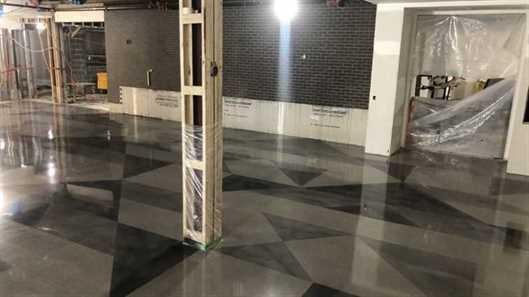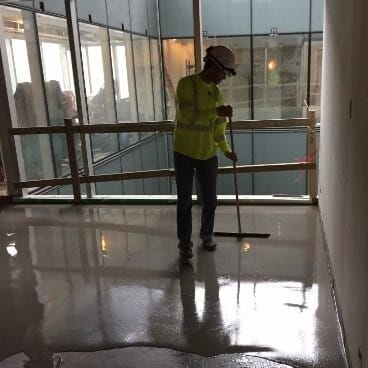
There are so many things around us that we never think about, but that play an important role in our lives. Can you imagine the discovery of gravity? I like to think everyone was just walking around, thinking “Hey, this is just how things are, we stick to the ground” when Isaac Newton said “Hey wait a second…why are we stuck to the ground?” and then bothered figuring it out. I’m reminded of this because of how most people think of flooring; it’s simply there to put things on; it might as well be floating in space! There’s more to flooring than meets the eye.
Finished floor is what most people simply call flooring; it’s the part of the floor that you see. It might be made out of resinous materials, carpet, or wood. Your finished floor might also be concrete; a qualified concrete polishing company can take what would be a plain, unfinished concrete look and turn it into something magical. The finished element of the floor is there to look beautiful, but it doesn’t exist in a vacuum; it needs to be supported by other structural elements in order to maintain its integrity. The elements below the floor are referred to as substrate, which simply means “the underlying layer”.
Underlayment is the second layer of flooring; it’s not always used, but when it is it’s to ensure that floor covering has a smooth surface to be put over. This layer is more typically used in residential flooring, to make the installation of laminate, hardwood or other surface-level flooring finishes easier and more practical to install.
The subfloor exists below the rest of the floor, and it works to hold up the other flooring elements. Aesthetics are not important for subflooring; it’s often made of concrete in commercial construction, but plywood and other materials might be used for residences. This part of your floor is essential for structural integrity.
Joists are essentially the “bones” of the flooring; they’re made of lumber, and they create a structure on which the rest of the flooring can be laid. Concrete slab flooring does not have joists. Concrete usually features rebar in order to create structural integrity.
An interesting element of polished concrete flooring, which we described earlier, is that it really doesn’t have layers; the polished topping is essentially still a part of the same solid concrete floor. There isn’t any underlayment, as concrete is poured in; there’s no subfloor, except insofar as the unpolished concrete is subfloor. There are no joists, because the rebar acts to maintain structural integrity. All of this means that while you can have incredibly layered flooring, you can also have flooring with only one thick layer. Resinous flooring, conversely, is usually layered over concrete slab, so you would have multiple levels. The layering looks quite different between residential, commercial and industrial purpose flooring, so you might find something quite different depending on your occupancy!

